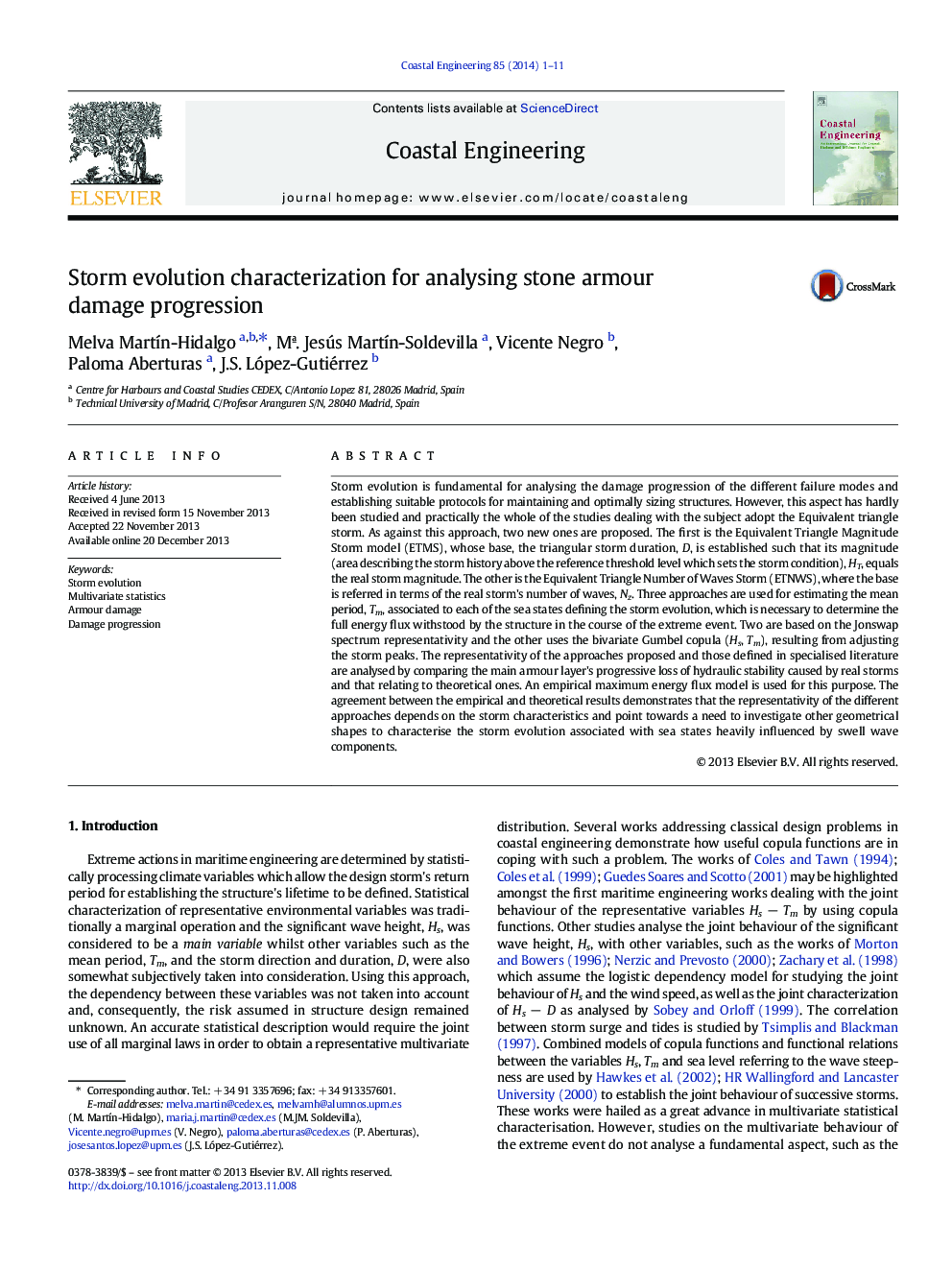| Article ID | Journal | Published Year | Pages | File Type |
|---|---|---|---|---|
| 1720839 | Coastal Engineering | 2014 | 11 Pages |
•Storm evolution is fundamental for analysing the damage progression.•The storm evolution approaches accuracy depends on the storm characteristics.•The triangular models are good for estimating the damage evolution for sea storms.•The triangular models underestimate damage evolution for more developed sea states.
Storm evolution is fundamental for analysing the damage progression of the different failure modes and establishing suitable protocols for maintaining and optimally sizing structures. However, this aspect has hardly been studied and practically the whole of the studies dealing with the subject adopt the Equivalent triangle storm. As against this approach, two new ones are proposed. The first is the Equivalent Triangle Magnitude Storm model (ETMS), whose base, the triangular storm duration, D, is established such that its magnitude (area describing the storm history above the reference threshold level which sets the storm condition), HT, equals the real storm magnitude. The other is the Equivalent Triangle Number of Waves Storm (ETNWS), where the base is referred in terms of the real storm's number of waves, Nz. Three approaches are used for estimating the mean period, Tm, associated to each of the sea states defining the storm evolution, which is necessary to determine the full energy flux withstood by the structure in the course of the extreme event. Two are based on the Jonswap spectrum representativity and the other uses the bivariate Gumbel copula (Hs, Tm), resulting from adjusting the storm peaks. The representativity of the approaches proposed and those defined in specialised literature are analysed by comparing the main armour layer's progressive loss of hydraulic stability caused by real storms and that relating to theoretical ones. An empirical maximum energy flux model is used for this purpose. The agreement between the empirical and theoretical results demonstrates that the representativity of the different approaches depends on the storm characteristics and point towards a need to investigate other geometrical shapes to characterise the storm evolution associated with sea states heavily influenced by swell wave components.
